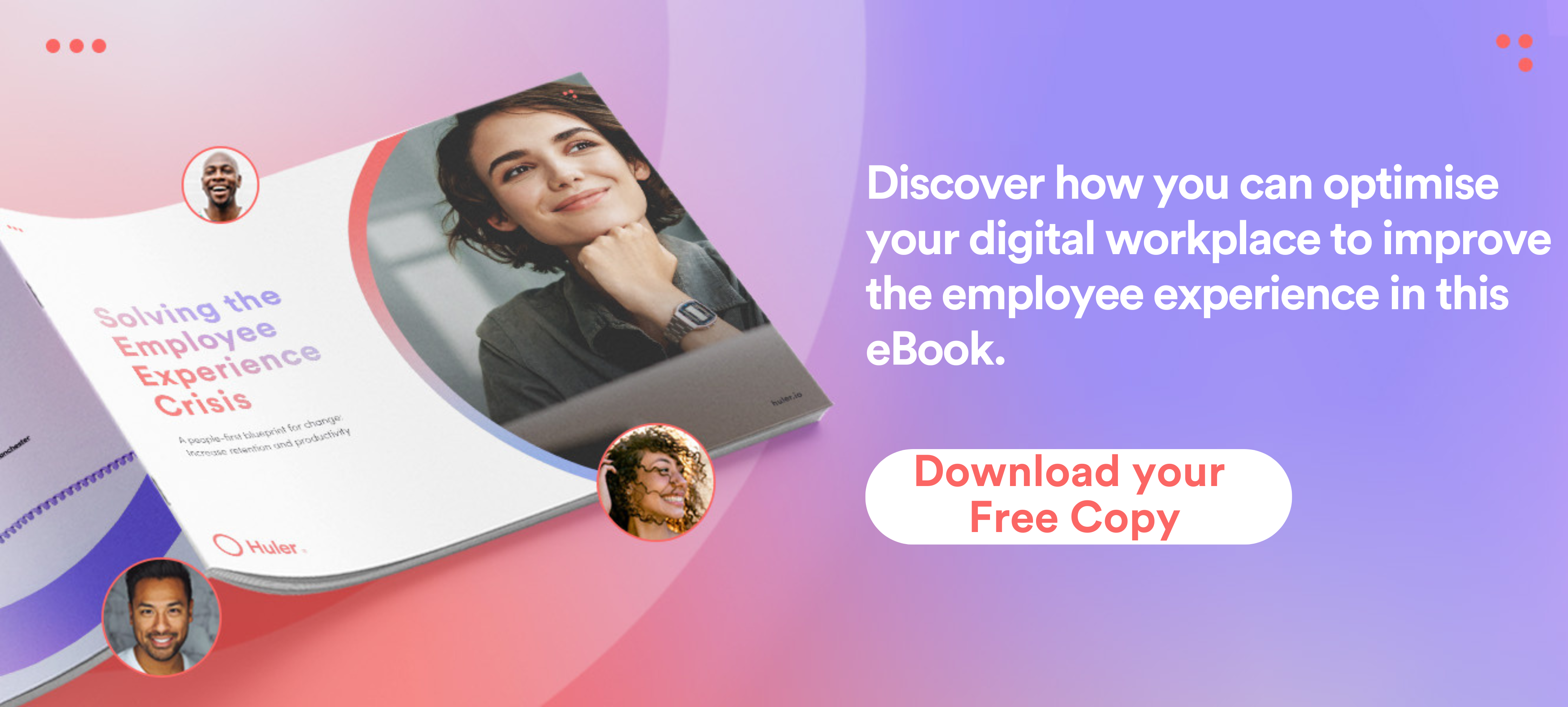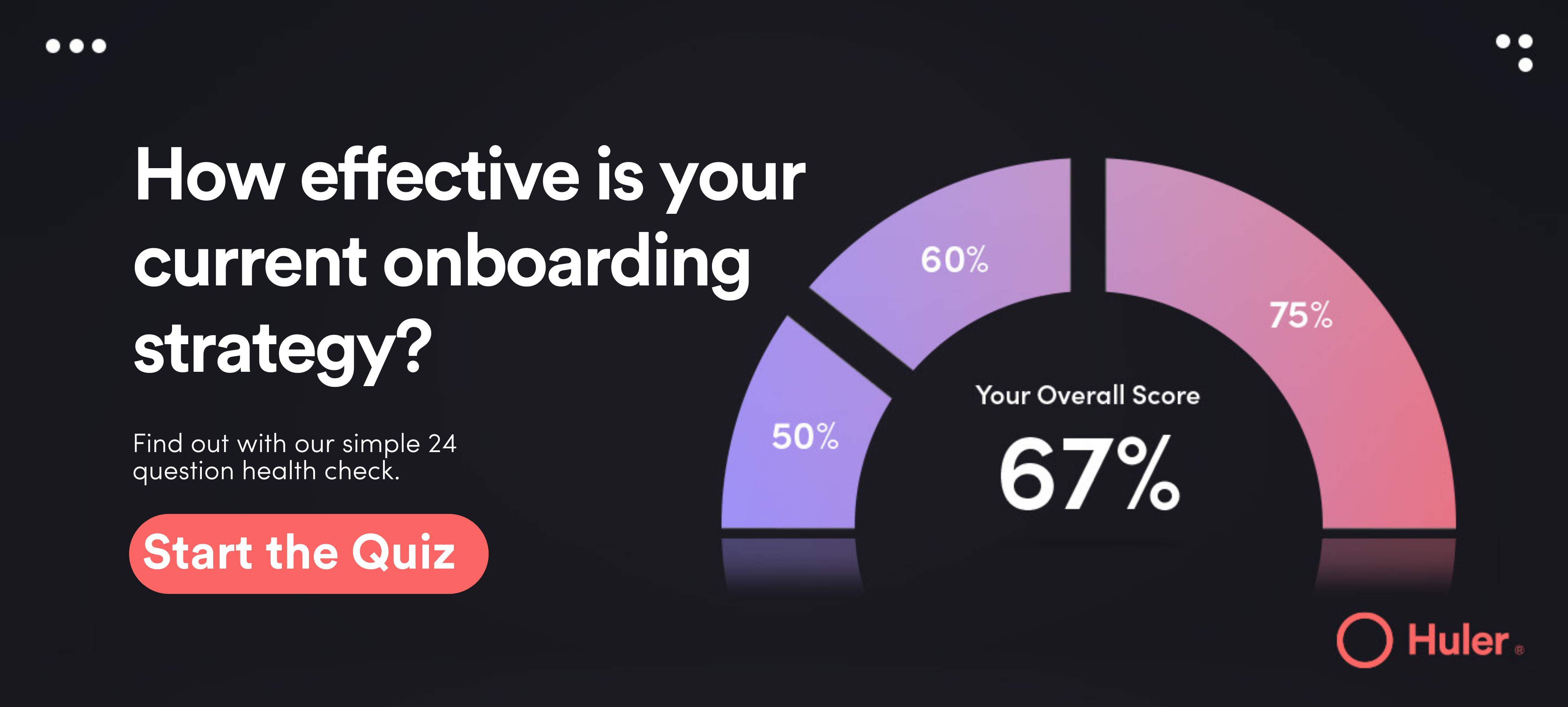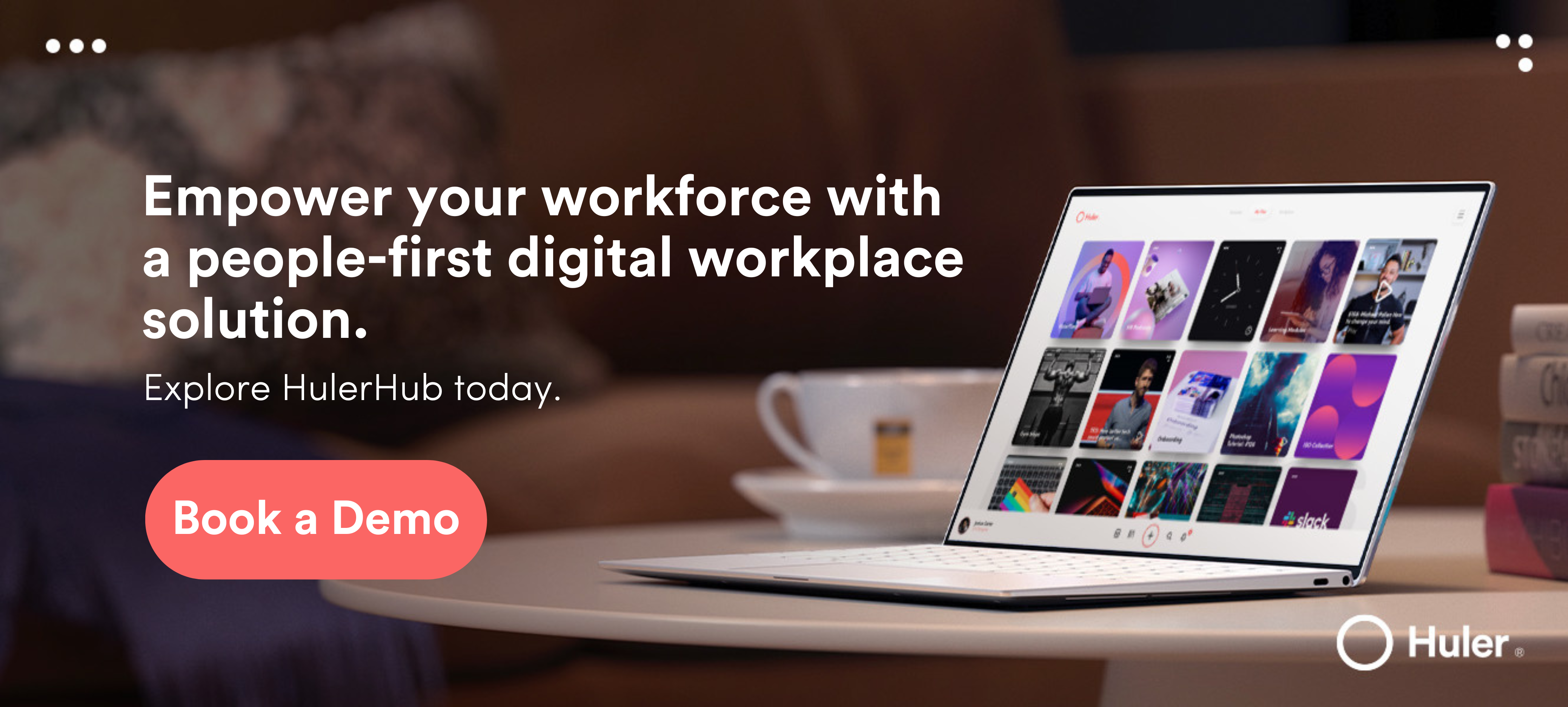Scroll for more
Employee Experience
4 Vital Employee Experience Touchpoints You Shouldn’t Neglect
Nicky Hoyland
The customer experience has been a primary focus for organisations for pretty much forever. Which makes sense because, if you’re a business with no customers then it’s likely you won’t last very long. Money makes the world go around after all, and your customers are the people with the money…so of course you want to make them happy.
But what about your employees?
The employee experience isn’t a new concept, but it’s probably fair to say that it’s been consistently overlooked until more recently when some organisations got wind of the notion that taking care of their people resulted in better performance. Who knew?
Unbelievably, until the last decade or so, employees haven’t been treated as well as they should. And while the powers that be were focusing on taking control of their customer experiences, they remained pretty much blind to the fact that their disengaged, bored, unchallenged and disgruntled employees were unknowingly unravelling their CX efforts ever single day.
We’re happy to report, however, that in more recent times some organisations are doing more to take control of the employee experience with an aim to make them more positive in order to reap the benefits that engaged, happy employees bring. Starting with focusing on key employee experience touchpoints within the employee journey.

What Are Employee Experience Touchpoints?
If you’ve found your way here, you’re probably in the same boat as those aforementioned organisations. You’ve undertaken the noble task of enhancing the employee experience for your people. But where to begin?
While it might be tempting to jump headfirst into making changes, it’s probably better to first take a step back and evaluate the situation from both your perspective and through the eyes of the employees in your business.
We’ve mentioned in previous articles about the employee experience on our blog that it’s impossible to control every single experience a person has while working at your company. However, what you can do is distil the core employee experience down to several ‘touchpoints’ starting at recruitment stages and extending to employee exit.
In defining your touchpoints, you will find it much easier to break down the employee experience and pinpoint those areas, or moments of truth, that your culture, policies, processes, leadership styles, training offering, benefits, internal comms influence.
So, without further ado, let’s dive into the four most important employee experience touchpoints your business absolutely shouldn’t be neglecting right now.
4 Most Important Employee Experience Touchpoints
The touchpoints we’re about to explore are four very broad milestones of the journey employees take in a business. Within them are a whole range of micro touchpoints, that can be broken down even further into human, organisational, physical, and technology related points. We’ll try and cover as much as we can in each, but what lies within each can and will look very different for each organisation, so be sure to take a bird’s eye view of your own employee experience and make a note of all touchpoints, be they macro (i.e. onboarding process) or micro (i.e. having a baby).
Recruitment
You’d be forgiven for thinking that the employee experience starts on an employee’s first day. But if you really want to gain an advantage when it comes to shaping the experience your organisation offers, start with recruitment. There are many stages to this process in itself:
- Job Advert
- Application Process
- Pre-Screening
- Interview(s)
- Offer
How your organisation comes across at each stage of the recruitment process will leave a lasting impression on potential employees. So set your stall out early and aim to be consistent throughout the process.
For example, be sure to showcase your company culture throughout the recruitment process. Often, businesses will include their core values, aims and mission in a job advert, but never speak of them again throughout the rest of the process. If these are strong enough to attract candidates, you have to live and breathe them. Don’t just talk the talk, walk the walk!
Offering a consistent positive experience throughout the recruitment process will ensure you hire the best people who genuinely connect and align with the goals of your organisation. It also builds on your reputation as an employer among candidates whether they were offered a job or not. Word gets round, so it’s a good idea to do what you can to ensure the word on your business is a positive one to draw in more of the right talent in the future.
Onboarding
Onboarding doesn’t start on an employee’s first day. We repeat: onboarding doesn’t start on an employee’s first day.
Being proactive about the onboarding process is the first step in improving the experience for new hires. Think about it, have you ever started a job and not been able to login to your digital workplace or emails on the first day? We can bet that most people have experienced something similar, and it left them feeling at a loose end, unproductive, nervous and at sea.
Before you do anything else, think about all of the things your new employee will need for their first day. This might be physical: a desk, computer, notebook, working keyboard and mouse, chair, etc. It could be tech based: passwords, email client, software, video conferencing and communication apps. Or it could be human: a sense of belonging, clear communication, a plan of action, step by step instructions, policies and procedures, introductions to colleagues, etc.
There is lots to think about in the onboarding process, and this also needs to balance with the things you need to do too, such as compliance procedures and training. Touchpoints might also vary if your new hire is remote, office-based, a frontline worker, or hybrid.
The key is to know your touchpoints and be proactive. Look at:
- What can be done before the employees first day? (e.g. signing documents, filling in forms, sharing employee handbook, sending equipment, setting up emails)
- What needs to be in place for the employee’s first day? (e.g. team introductions, passwords, desk and chair, stationary, welcome gift)
- When do new employees typically feel a bit lost in their first few weeks and how can you support them? (e.g. lunchtimes, meetings, getting to grips with new software, booking holidays)
- What parts of induction do employees not like the most and how can you change them?
For any of these touchpoints, seeking out employee feedback and taking action based on it is the easiest way to understand the parts of the journey that leave a lasting impression on employees, for better or worse!

Growth
An onboarding period should last a solid 3-6 months for most businesses. But what comes after that?
No, your employees don’t just get their heads down and crack on like good little robots. They’re human! How could you expect them too?
Employees continue to interact with and have experiences with your organisation everyday. And this ‘messy middle’ is quite possibly the most challenging phase, when the honeymoon period has worn off and employees get stuck in to their job role and responsibilities.
Instead of leaving them to sink or swim, however, there is another way. And it comes down to facilitating growth and development at every opportunity. Areas to focus on here include:
- Training and development opportunities
- Marking important milestones (both professional and personal)
- Asking for – and listening to – feedback
- Performance reviews and appraisals
- Regular constructive feedback
- Supporting work/life balance (e.g. flexible working, mental health)
- Time for passion projects
- Recognition and reward
- Mentoring and coaching
- Social events
- Benefits and perks
A good employee experience actively encourages employees to grow both professionally and personally. To make this happen, organisations must understand what is important to their employees, listen to feedback and communicate openly.
Whether remote, hybrid, office based or otherwise, what employees want from their experience with a business (to be valued, appreciated, recognised, rewarded and listened to) doesn’t vary much. It just might vary in the specifics depending on the individual. When push comes to shove, everyone just wants to be valued for what they bring to the table and supported to be their best selves.
Crucially, this means not just focusing on the professional side of the things but the personal, too. Taking the time to recognise and celebrate important life events like new babies (or fur babies), marriages, personal achievements (e.g. running a marathon) makes your people feel valued and seen. Similarly, making room for empathy and flexibility during difficult times also goes a long way to shaping a people-first employee experience that focuses on the touchpoints that really matter.
Exit
It’s impossible to expect that you will retain every employee in your business, no matter how great your employee experience is. Retirement, relocation, career change ups, and family commitments can and will result in people leaving. And that’s okay.
But just like the recruitment process forms an important touchpoint in the employee journey, so does the exit phase. Whether an individual has worked in your business for 20 years or 20 months, each person deserves a professional and consistent offboarding experience that leaves them feeling positive about their time with your organisation.
A good offboarding experience isn’t just positive for the employee either, it’s also important for your business. Getting it right can ensure you mitigate security risks, anticipate and prevent legal issues, better manage the change in your continuing teams, and get valuable feedback from the leaving employee.
Points of this journey you might want to focus on include:
- The resignation process (e.g. documentation, notifying teams, communicating with clients, counteroffer, etc)
- Administration of contract termination (e.g.compensation packages, reimbursements, tax)
- Handover
- Return of company equipment
- Exit interview
- Last impression (e.g. thank you note, leaving party, gift, references)
Losing or letting go of an employee might be very difficult or complex in some circumstances. As we’ve mentioned before: it’s probably not feasible to aim for every single interaction within your business to be positive. However, if you control the controllable, you’ve a better chance of staying in control of the employee experience.
It’s also worth remembering that, particularly in the exit stages, one employee’s experience can directly affect another. Careful handling of the situation, including transparent communication and openness for feedback, can control the lasting impression of all affected as far as humanly possible. While a devil may care approach may result in a knock on effect that adversely effects engagement and, eventually, turnover.
Start With Your Touchpoints
The ideas above are by no means exhaustive. Each business, with its different set ups, may find extra steps in the employee journey and identify even more touchpoints to pay special attention to.
That being said, when it comes to employee experience design, the very first place to start is your touchpoints. So, take some time to sit down and write them out, breaking each into smaller and smaller parts. Only when you have a solid idea over what you can control can you start to put measures in place to reshape and redefine the experience.
If you’re looking to gain better visibility of your workforce, and better understand and shape the employee experience, HulerHub can help! Our innovative employee experience platform brings together vital internal communications, content, systems and knowledge into one cloud-based digital workplace. Within HulerHub, administrators such as HR Managers and Team Leaders can track and monitor employee experience touchpoints, and enhance the employee experience by making it more personalised, consistent, empathetic and human, whether your people work remotely, on site, or a mixture between the two.
To find out more about HulerHub and how it can help you, book a demo and see it in action.
